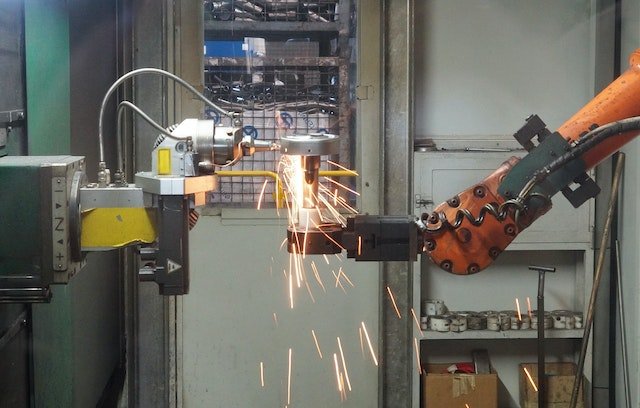Last Updated on August 8, 2025 by Rida Hamid
Have you ever wanted to step inside and explore the world of robotic welding? Well, now you can with cobot welding! Cobot welding is a form of collaborative robotics that allows people to work side-by-side with robots in a safe and efficient manner. This production technology provides companies with greater flexibility to handle larger batches of products within shorter timeframes. Not only does it offer businesses increased productivity, but also a higher level of safety for their workforce due to its combination of both human operators and automated robotic machines working together in harmony. In this blog post, we’ll discuss this novel technology’s many advantages such as improved accuracy and enhanced precision levels at significantly lowered costs compared conventional methods.
Table of Contents
Introducing cobot welding, the new form of automation in welding
As technology continues to advance, new forms of automation are making their way into the workforce. One of the most exciting developments in recent years is cobot welding, a collaborative robot that works alongside human workers to complete complex tasks quickly and efficiently. This innovative technology is transforming the welding industry, allowing welders to work more safely, accurately and quickly than ever before. By working in tandem with humans, cobots are able to complement the existing skills and abilities of welders, rather than replace them entirely. If you’re interested in exploring the cutting-edge world of welding automation, cobot welding is definitely worth investigating.
Advantages and disadvantages of using cobots for welding
Cobots, or collaborative robots, have revolutionized the manufacturing industry and made it easier for workers to perform ltasks like welding. One major advantage of using cobots for welding is their ability to work alongside human workers without posing a risk to their safety. They can also perform repetitive tasks with high precision, which can increase production efficiency. However, there are also some disadvantages to using cobots for welding. For example, their initial cost may be high, and they may not be suitable for all welding tasks or materials. Additionally, the lack of tactile feedback from cobots can sometimes result in imperfect welds. Ultimately, companies need to weigh the pros and cons of using cobots for welding and decide if they are the right investment for their specific needs.
Different types of cobot welding machines and their features
The world of manufacturing has been revolutionized by the advent of collaborative robots, or cobots for short. Among the most important applications of cobots in manufacturing is welding, and today, there is a range of cobot welding machines available on the market. These welding machines come with different features to suit specific welding needs. They can be used for various welding tasks like MIG, TIG, and Stick welding, to mention a few. Some of the key features that differentiate cobot welding machines include their payload, reach, and degree of freedom, as well as their sensitivity to touch and collision. They are easy to operate and can work alongside human workers, which makes them an ideal option for small-medium-sized businesses looking to optimize their production processes. For more information visit Cyber-Weld
Apart from that, if you are interested to know about General view of TIG welders then visit our Business category.



























